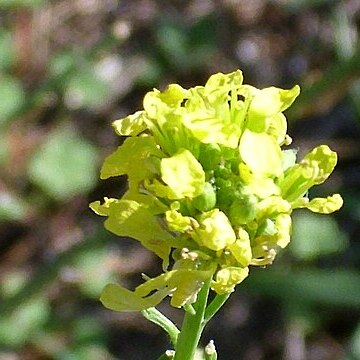Annual to perennial taprooted herbs. Hairs simple. Stems erect or ascending, leafy. Lvs lyrate-pinnate. Racemes ebracteate. Sepals ± erect, the inner slightly saccate. Petals yellow or white, entire. Stamens 6, without appendages. Lateral nectaries 2, 3-lobed, inside the bases of the lateral stamens; median nectaries 2, simple, outside each pair of median stamens. Stigma sessile, capitate. Silique cylindric, dehiscent; valves obscurely 3-veined when ripe; beak swollen at tip, indehiscent, 0-2-seeded. Seeds ovoid, not winged, in 1 row per locule.
Annual or biennial, scabrous herbs. Sepals erect, the inner pair slightly saccate. Petals clawed. Stamens 6; nectariferous glands 4, a 3-lobed gland inside base of short stamens, a large gland outside each pair of long stamens. Siliqua dehiscent, beaked; valves with three prominent veins; beak short, swollen. Seeds ovoid, 1 row per locule, 0–2 in beak; cotyledons conduplicate; radicle incumbent.

